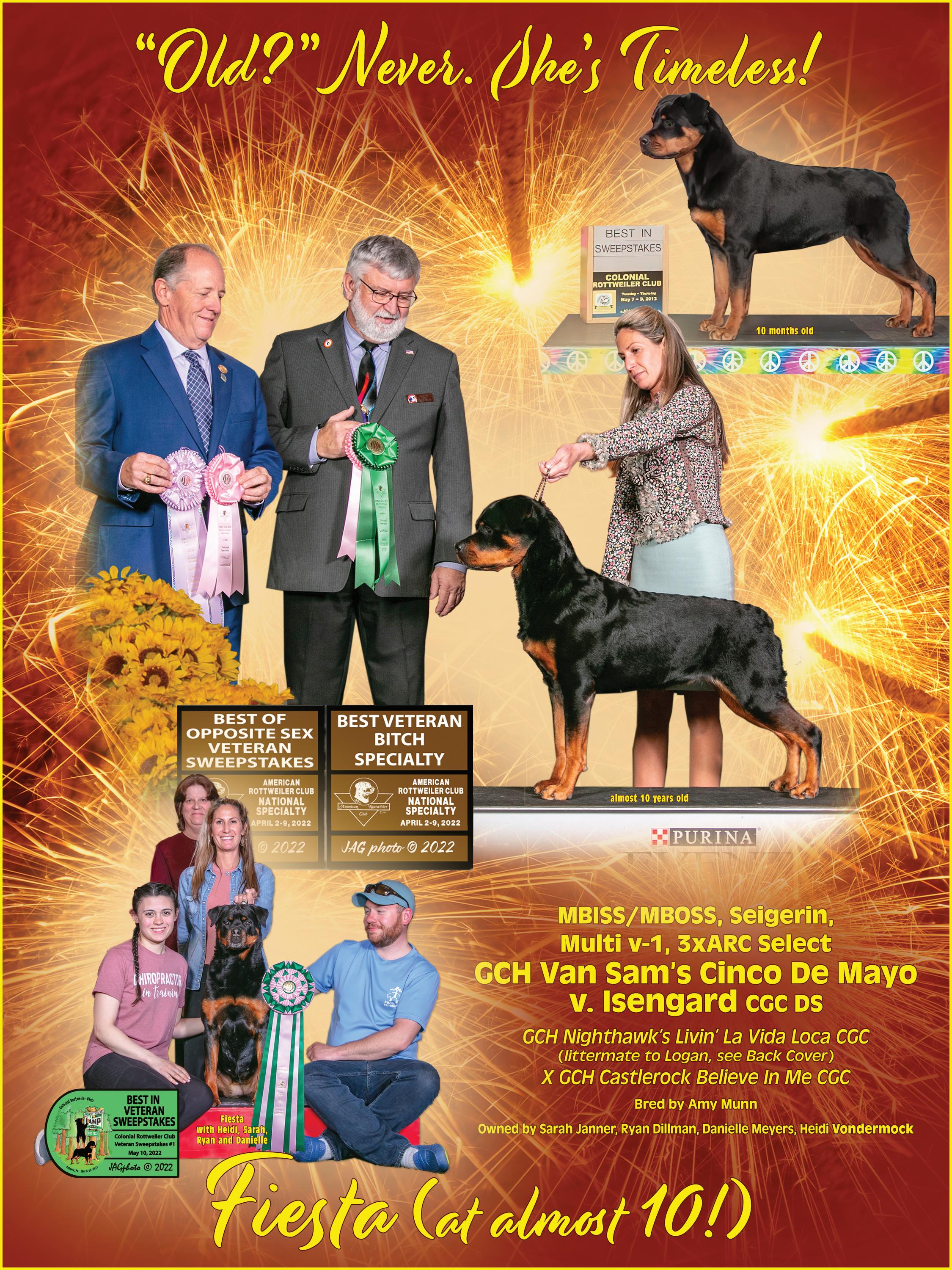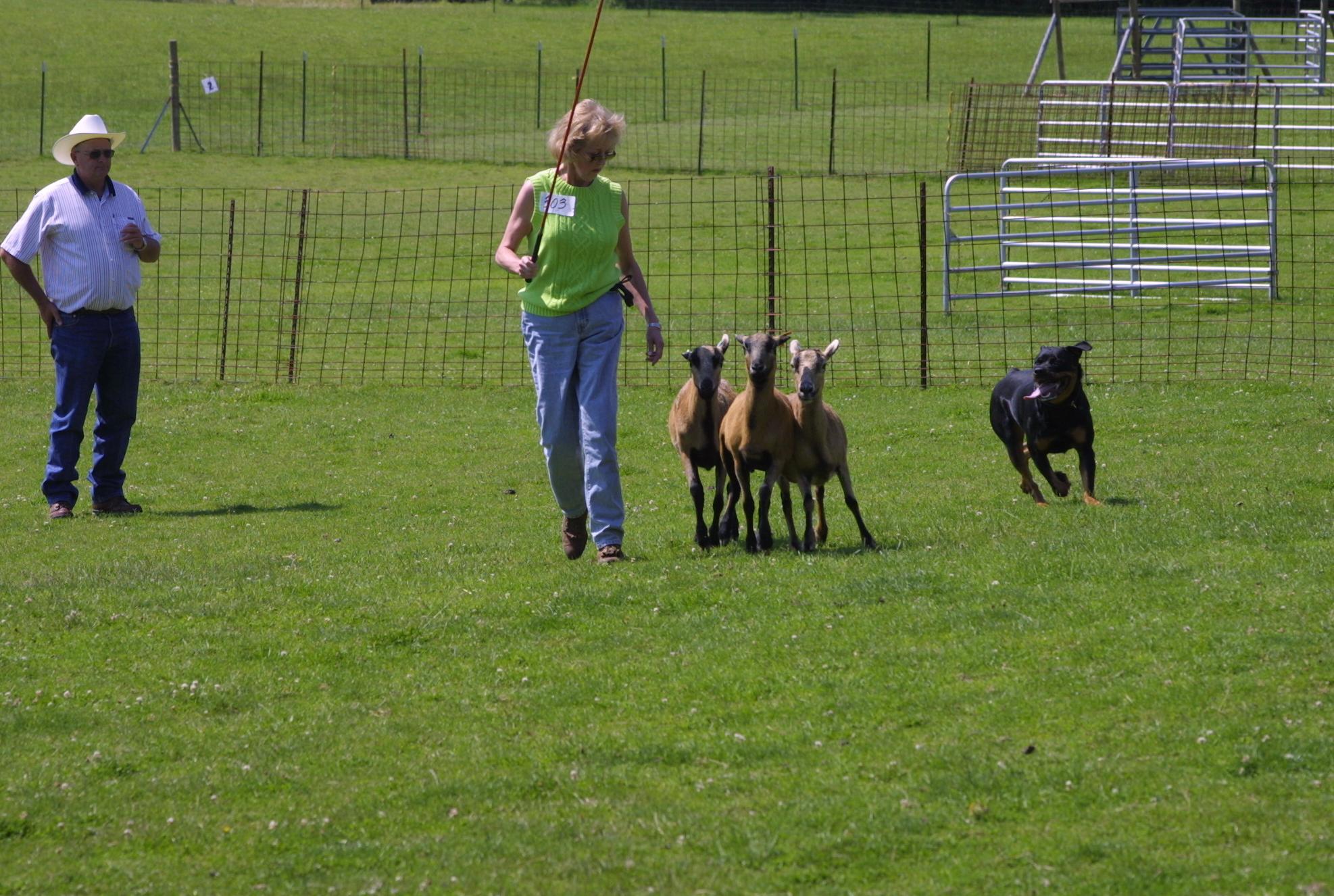
4 minute read
Janner, Sarah..........................................................Inside Back Cover LaBombard, Jodi................................................................Back Cover Luhrs, Doreen.....................................................Front/Inside Cover Sabalos, Sharon
Now, moving on and using these games that will lead to future behaviors. Instead of just handing the puppy the treat, a treat is tossed, and I will say one name, of the dog that is to get the treat. So, the treat is tossed about a foot from the dog that is to get it, complete with the name. The “other” dog must sit until the first dog comes back to a sit.
To make it simpler to understand, Tesa and Vira are both on a sit stay. I say “Tesa” and toss her treat towards her. She gets up, gets her treat, and must sit again before I say “Vira” and toss hers. This continues until I can toss a treat a distance, and only release one dog to go get it. Moving onto the toys. Possession is 9/10 of the law, correct? I am fairly sure we have all heard that expression. However, our dogs think it is 100%, with no exceptions. We bring home that new puppy, and managing the toys becomes a chore. We don’t want the puppy to infringe on our older dogs’ toys, and we don’t want the older dogs to get so possessive that we have to worry about our little one getting into an argument with our older dogs. So how do we handle this?
Advertisement
Puppy does not get to take a toy from the other dog, unless the dog drops it and walks away. So, a toy is tossed, “Tesa” and Tesa can go get the toy. Vira must wait for her name. Her toy is tossed, and I say her name. She has then been released to the toy. I continue until I have both dogs bringing back their own toys, and when I throw, they can only get their own toy. There is no arguing over toys at all.
I have had four of my own dogs at the same time playing fetch, and each bringing back their own toy for me to throw. If you do the work, it is really fun to play this way. This also helps when you are working your dog in the vicinity of others working their dogs. Your dog will not be so interested in another dog chasing a toy. What else does this lead to later on? I can put both of my dogs on a stay, and send one over a jump, and then the other. I can run both of my dogs on a short agility sequence with both dogs in the weaves at the same time. I can have two toys at the end of the sequence, and each dog will run the sequence, grabbing her own toy at the end.
To accomplish all of these tasks, you must have complete dedication to what your dog is doing at all times. Without the dedication to training these behaviors, you will not get them. You must have rules that you stand by. No dog is allowed to take a toy away from another dog. No dog is allowed to chase the toy I threw for another dog.
These puppy “games” are taught, and reinforced, and monitored throughout the lifetime of the dogs. As the dog enters adolescence, I have very little to do in the way of managing who gets what and when. By this time, my puppies have no problem retrieving anything, and when we start real competition sequences, they already know most of it.
I have a game that I play in preparation for the Utility directed retrieve (gloves). I put several different objects in a circle, and send my dog (yes on leash) to each one. The highest value is the last, so perhaps her favorite toy will be at the last spot. Items can be an old cell phone (with nice leather case for easier pick up), a glove, treats in one of the spots, a rope toy, a favorite toy, an old shoe, etc. Use your imagination. The last item is the one we play with. The dog, through a simple game is learning to take direction and also retrieve anything. Another game is to hide treats all over. With your dog on a leash, send to one of the hidden spots. If the dog veers off, bring him back to you and start again. Make it short and simple to start. Soon the dog is heading in the direction you sent him to get the treat. Voila, directed jumping, and directed retrieve becomes easy.
Another game is to send the dog through a tunnel to get a dumbbell. This really gets dogs exited and they have fun learning. I will also throw a dumbbell, and send the dog through weave poles.

Revving up retrieves and also gearing towards fast “go outs” for the directed jumping exercise is planting a toy at the end of your yard. Send your dog, and when he gets the toy, you have one waiting for him in your hands, and you call him back and let him get the second toy. As he gets more confident, you can ask him to sit instead of grabbing the first toy, and then call him back to you for the one you are holding. The dog does not know he is being prepped for the “go outs” for directed jumping.
These are all simple dog games that dogs love to play. Doing this also teaches the dog before he realizes he is learning. If you can keep making your dog believe he is playing, while he is really learning, you have conquered that gap between play and work. It can be all one and the same.







